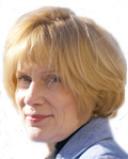Creativity
Top 5 Habits of Super Observers
How to exploit the brain's processing system for improved cognitive skills.
Posted January 25, 2014

Our brains can comprehend an image in just 13 milliseconds, according to MIT researchers last week in Attention, Perception, and Psychophysics. They believe that we’re seeking concepts to make sense, and we do this at lightning speed.
Some people have organized their lives to transform this ability into a gift. I call them “super observers,” or people who've developed specific exercises, reminders, or routines so they can “see more” than the ordinary person. I document them in Snap: Seizing Your Aha! Moments, and below I describe two of them:
Whenever I teach a workshop on observation, whether to writers, attorneys, or cops, I always mention Dr. Joseph Bell, mentor of Arthur Conan Doyle. Bell was a teaching surgeon at the University of Edinburgh during the late 19th century. His "Method” was a disciplined approach to deducing obvious and subtle details about patients from mere observation. Without asking a single question, he could state facts about virtual strangers that matched and even superseded his clerks’ intake notes.
Of course, the Method was much more than it seemed. Bell was no psychic. He'd thoroughly educated himself in many areas of information so that his observations were actually highly informed interpretations. When he wasn't seeing patients, he was researching. And this brings us to:
Habit #1: Immerse fully in information relevant to your observational field.
To demonstrate, Bell would bring in a patient he hadn’t yet met and from a variety of signals he’d describe details about that person’s occupation, health, domestic life, and recent activities. He could do this because he’d previously learned and tested himself on all kinds of specific things about occupations, scars, clothing, posture, disease, and dialects. Thus:
Habit #2: Be vigilant for applications of knowledge, and put them to the test.
When I was researching for Snap, I came across another doctor who'd devised a unique way in our current culture to help students develop observational skills. While Bell lectured and demonstrated, this man integrated and experimented.
According to studies, observational skills among new doctors have declined. They use more laboratory tests and radiological exams, which can replace the need for clinical observation. However, without regular practice, observational skills remain superficial and unpolished.
When Dr. Joel Katz, a professor of medicine at the Harvard Medical School, pondered this challenge, he thought of something from his background: Before he’d become an internist, he’d been a graphic designer.
Katz understood that, like medical conditions, art appreciation is inherently ambiguous, forcing the observer to rely on an incomplete data set to make judgments. Once Katz spotted these similarities, he merged these disciplines to develop a unique curriculum, and then invited colleagues from art and medicine to help. This gives us Habit #3:
Habit #3: Experiment with blending skills from diverse backgrounds.
The objective of Katz’s experiment was to see if the guided observation of artworks improved skills in patient care. To test his hunch, Katz and his colleagues paired Visual Thinking Strategies (VTS) with diagnostic instruction. VTS is based on a theory by Cambridge researcher Abigail Housen, who worked with Philip Yenawine, Director of Education at New York’s Museum of Modern Art, to assist viewers to better appreciate the meaning of art. A nice side benefit, they discovered, was that training in VTS improved cognitive abilities and developed critical thinking skills.
With his colleagues, Katz developed a 10-week course and invited students in pre-clinical training to participate. Twenty-four students were assigned to the experimental group and thirty-two students acted as controls. Each first took a visual skill examination for a pre-training baseline reading.
While the controls continued with the typical curriculum, students in the experimental group went to Boston’s Museum of Fine Arts each week to participate in observation exercises coupled with lectures about how the exercises related to physical diagnosis. The students walked around the museum observing sculptures and paintings by such artists as Gauguin, Picasso, Pollock, Monet, and Munch.
For example, while looking at ancient aboriginal artists, they pondered the role that form played in a piece of art’s impact and then applied this same method to observing patients with breathing disorders. How was the stomach moving? How is the voice generated and projected? What was happening to posture and muscles? Such exercises helped these students to think beyond well-known interpretations, encouraging them toward less obvious angles. That's #4.
Habit #4: Be creatively flexible in applications; try out several angles.
At the end of the course, the participants retook the visual skill exam. Compared to the control group, students who’d completed the art course made more frequent observations than they previously had. There was an average increase of 5.41 observations per image (a 38% improvement in focus), as well as a higher level of descriptive sophistication. In sum, they were more accurate than students in the control group and better than they'd been prior to the course. They also showed improvement in critical thinking skills.They would affirm Habit #5:
Habit #5: Fully engage in opportunities for observational improvement.




